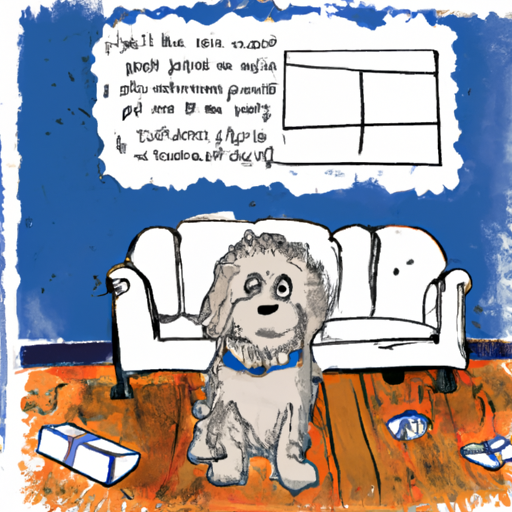Introduction
You’ve probably experienced it before: You come home from a long day of work, and your dog is overjoyed to see you, leaping with excitement, tail wagging furiously. That’s a normal reaction for dogs who have missed their human companions. But what if your dog’s behavior goes beyond the normal “I’ve missed you” excitement? What if your dog exhibits intense distress whenever you’re away? This could be a sign of separation anxiety in dogs.
Understanding Dog Separation Anxiety
Separation anxiety is a condition that affects many dogs and can cause a great deal of distress for both the dog and the caregiver. Dogs with separation anxiety may show a variety of symptoms, some more obvious than others. It’s essential to understand these symptoms so you can help your furry friend navigate through their anxiety.
Common Symptoms
Here are some common symptoms of dog separation anxiety:
- Excessive Barking or Howling: If your dog barks or howls excessively when you’re away, even if it’s just for a short period, it might be a sign of separation anxiety.
- Destructive Behavior: Dogs with separation anxiety may chew on furniture, scratch at doors, or engage in other destructive behaviors.
- Pacing: Some dogs may pace in a fixed pattern when left alone.
- Escaping: Dogs with separation anxiety may attempt to escape from the area where they are confined when left alone.
- Accidents in the House: If your dog is house trained but starts having accidents when you’re away, this could be a sign of separation anxiety.
- Changes in Appetite: Dogs with separation anxiety may lose interest in food or stop eating entirely when their caregiver is not around.
These symptoms can vary greatly from dog to dog, and it’s important to remember that not all dogs will exhibit all of these behaviors.
Possible Causes
Just like humans, dogs can develop anxiety for a variety of reasons. Some possible causes of separation anxiety in dogs include:
- Changes in the household, such as a move or the addition of a new family member.
- A traumatic event, such as a severe storm or an accident.
- Changes in routine, such as a new work schedule for the caregiver.
- Neglect or abandonment in the dog’s past.
How to Help Your Dog
If you suspect your dog has separation anxiety, there are several ways you can help:
- Provide Plenty of Exercise: Exercise can help alleviate anxiety in dogs. Try to make sure your dog gets plenty of physical activity each day.
- Create a Safe Space: Designate a specific area in your home where your dog can feel safe and secure when you’re away.
- Use Distraction Techniques: Toys, puzzles, or music can help distract your dog and reduce anxiety.
- Implement Desensitization Techniques: Gradually get your dog used to your departures by leaving for short periods at first and gradually increasing the time you’re away.
- Consider Professional Help: If your dog’s anxiety is severe, you might need to consider seeking help from a professional dog trainer or a veterinary behaviorist.
Separation Anxiety Treatment Options
There are several treatment options available for dogs with separation anxiety. These can range from behavior modification techniques to medication. Always consult with your vet to determine the best course of action for your furry friend.
| Treatment Option | Description |
|---|---|
| Behavior Modification | This involves training your dog to become less anxious about your departures. |
| Medication | In severe cases, medication may be necessary. There are several types of medication that can help manage anxiety in dogs. |
| Natural Supplements | Some natural supplements, like CBD oil, can help reduce anxiety in dogs. |
| Therapy Dog | In some cases, having another dog in the house can help reduce anxiety. |
Frequently Asked Questions
Q: Can separation anxiety in dogs be cured?
A: While there’s no “cure” for separation anxiety, it can be managed effectively with the right strategies and treatments.
Q: Can puppies have separation anxiety?
A: Yes, puppies can also have separation anxiety. It’s important to start training and socialization early to prevent separation anxiety from developing.
Q: Can my dog’s separation anxiety make other pets anxious?
A: Yes, anxiety can be contagious among dogs. If one dog is anxious, other dogs in the house may pick up on that anxiety.
In conclusion, understanding and recognizing the signs of separation anxiety in your dog is the first step in helping them manage their distress. Remember, you’re not alone in this journey. Reach out to professionals if you need help, and know that with patience, love, and understanding, your dog’s quality of life can be greatly improved.



